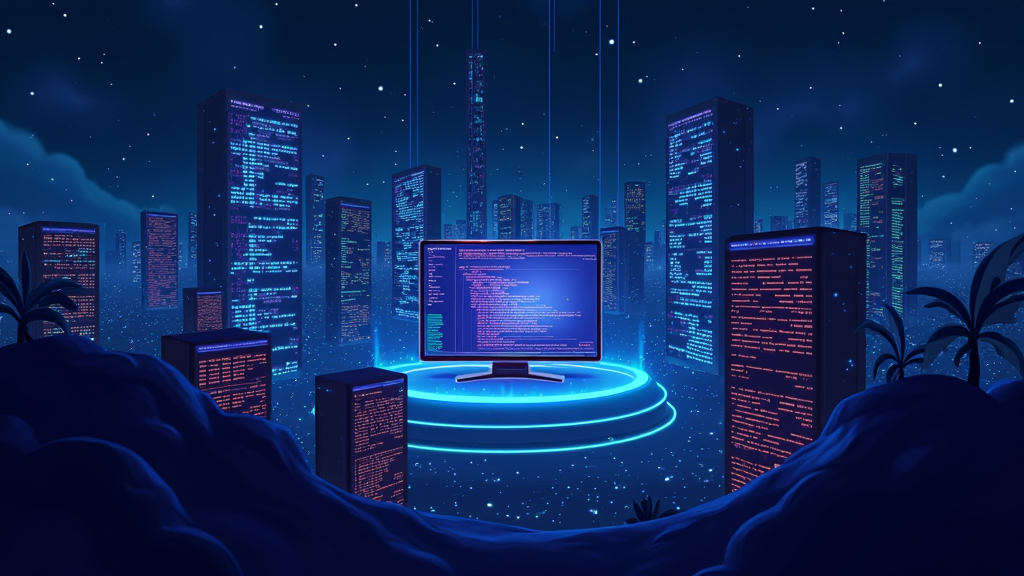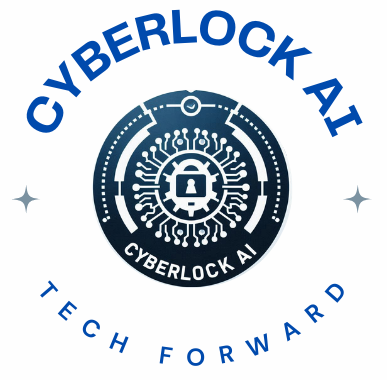Hollywood has crafted some truly entertaining hacker movies over the years, but if you’ve ever cringed watching someone “hack into the mainframe” in under 60 seconds, you’re definitely not alone. I’ve spent plenty of weekends glued to thrillers where furious typing somehow launches missile strikes or brings down global banks. Turns out, the real world of hacking is a whole different story. There’s a lot less neon lighting and far more patience, coffee, and problem-solving. Here’s my honest breakdown of how movie magic stacks up against reality, and what’s actually involved in hacking outside of Hollywood’s spotlight.

The Hype: Common Hollywood Hacker Tropes
Plenty of hacker movies have set the tone for what a “cool” cyber criminal looks like. The bigscreen staples usually include a mysterious underground lair, green code pouring down monitors, and hackers rapidfiring on keyboards while the clock ticks down on disaster.
The famous 1995 film “Hackers” popularized wild screen interfaces and over-the-top technoslang. “Mr. Robot” brought a gritty, psychological edge but still leaned into dramatic quick wins and techy visuals. From “Swordfish”’s spinning 3D cubes to “The Matrix”’s endless code, these tropes have stuck around for decades.
- Instant Access: Characters crack government security in moments using flashy tools or just guessing a password.
- Wild Visuals: Computers show swirling neon screens, endless encrypted files, and surreal animation during hacks.
- Solo Geniuses: The hacker is always a lone wolf, either an edgy rebel or misunderstood genius, saving or dooming the world on their own.
These visuals sure look awesome, but they set up some pretty wild expectations for what hacking is really like.
What Hacking Actually Looks Like
Move past Hollywood’s drama, and cybersecurity feels a lot different. Most real hacking takes place in normal rooms, often late at night, with people typing lines of code on fairly unimpressive looking computers. It’s a job that calls for researching vulnerabilities, understanding the target system, and a whole lot of patience.
In real life, hacking isn’t usually about glitzy instant results. There’s methodical poking, prodding, and sometimes weeks or months of groundwork. Hacking can mean exploiting weak passwords, social engineering (tricking people into giving up information), or looking for known vulnerabilities in outdated software. It’s not just magic keystrokes, it’s steady, sometimes boring, detective work and clever thinking.
Hacker Tools: Truth Versus Fiction
Movies love showing hackers with secret programs that do all the work for them. But in reality, most hackers (good and bad) use familiar tools that you can actually learn about or even legally try as a security researcher.
- Hollywood’s GoTo: Fancy, one-click hacking apps with slick graphics and animations.
- Real World Tools: Opensource security tools like Nmap (network mapping), Metasploit (for testing vulnerabilities), and Wireshark (network analysis). These don’t look glamorous, just a lot of plaintext command lines and logs.
Of course, there’s a healthy learning curve to using these tools. Success in real hacking depends far more on how well you understand the systems you’re working with than having “special software.” Many veteran professionals spend hours pouring over logs, checking online forums, and learning from open resources. Rather than relying on instant solutions, real hackers become experts by developing their investigative skills over time.
How Targets Get Picked in Movies vs. Reality
On screen, hackers always seem to go big. Think government agencies, billionaire banks, or secretive mega corporations. And they land their target, no matter how heavily guarded, every time.
But in real life, most hacks aren’t about taking down the Pentagon. Many cybercrimes target regular people or small businesses, often those with weak passwords or outdated protection. Phishing emails and ransomware attacks are common ways hackers gain access. So, while big hacks do happen, the everyday stuff is way less dramatic and way more frequent.
What’s more, many cybercriminals go after easy targets. They often scan the web for exposed databases or unpatched software, looking for a quick payday. This is much less risky than going after major corporations with robust security teams, which can quickly report incidents to the authorities.
Overlooked Realities: The Human Side of Hacking
I’ve noticed Hollywood focuses hard on the technical stuff, crazy rigs and wild software, while skipping over the real star of many successful hacks: the human element. Social engineering, which is basically tricking real people, plays a massive role in cyber attacks.
- Phishing scams prey on trust or confusion, coaxing people to share passwords or download infected files.
- Impersonation tricks employees into revealing sensitive info over the phone or in person.
These techniques rely more on psychological skill than blazingfast keyboarding. In fact, a clever phone call often achieves what “brute force hacking” never could.
Social engineering continues to be a powerful method because no amount of technological defense protects perfectly against human error. Proper training and keeping an eye out for suspicious activity are key forms of defense for companies and individuals alike.
Speed vs. Patience: The Real Timeline of a Hack
If you believed Hollywood, a skilled hacker can break in anywhere in minutes. In reality, successful hacks tend to take much longer, especially when targets actually have security measures in place. Many attacks involve a series of steps, gathering info, probing defenses, exploiting vulnerabilities, and covering tracks. Each step can take hours, days, or even longer.
- Hollywood Timeline: Hacking happens in minutes, tense music plays, countdown clocks tick, disaster is averted or triggered seconds before time runs out.
- Actual Timeline: Hacking is more like a marathon than a sprint. Security professionals work just as hard to detect and defend against these slow-moving threats, turning hacking into a high-stakes game of patience.
Persistence is often what separates successful hackers from amateurs. It might not make great cinema, but it matters in the real world.

Hollywood Hacker Fashion vs. Reality
You’ve seen it all, dark hoodies, sunglasses at night, maybe fingerless gloves. But if you peeked into a real security operation center, chances are nobody’s dressing for the role. Most are in tshirts, maybe with tech conference swag, and looking pretty sleepy after a late night patching software or chasing bugs.
That’s not to say hackers and cybersecurity folks don’t have personality. They just tend to blend in with everyday people more than Hollywood suggests. The diversity in backgrounds and personalities among real hackers reflects the wide array of skills and experiences in the field.
Challenges and Misconceptions Created by Movies
As fun as hacking movies are, the way they exaggerate what’s possible gives some people the wrong idea. I’ve had friends ask if I can “hack their WiFi” in under 20 seconds just like in the movies, or wonder if hacking really means just guessing a few passwords until you’re inside. These myths can actually hurt real-world digital safety.
- People underestimate the time and effort real hacking takes, leaving their devices exposed.
- Some believe security is pointless since “everything is hackable anyway,” which ignores how good security makes a real difference.
The truth is, staying up to date with security patches, using strong passwords, and watching out for scams go a long way toward staying safe online. It’s not flashy, but it works.
Movies also sometimes glamorize criminal behavior, making it seem heroic or without realworld consequences. In practice, illegal hacking can lead to hefty fines and jail time. Responsible hackers in the industry know the value of staying within legal and ethical boundaries.
Real Hackers: Good Guys, Bad Guys, and Everything In Between
Not every hacker is a villain waiting to drop the world into chaos. In fact, there are several types of hackers, many of whom work to protect people and organizations:
- White Hat Hackers: These are ethical hackers who help organizations find and fix vulnerabilities.
- Black Hat Hackers: Criminal hackers breaking into systems for personal or criminal gain.
- Gray Hat Hackers: These folks work in the space between, sometimes exposing vulnerabilities without permission to prompt fixes, but not for malicious reasons.
Movies don’t always do a great job showing these differences, but in the real world, ethical hackers play a super important role in keeping people safe online.
Government agencies and corporations hire ethical hackers through established programs. They reward experts who report threats, enabling them to fix issues before criminals can get in. This collaborative approach is a big part of how organizations stay ahead of evolving threats.
How to Spot Realistic Hacking Scenes in Film
After watching enough hacking movies, I started noticing the few rare films and shows that make an effort to get the details right. If you want a taste of what accurate hacking looks like, shows like “Mr. Robot” have actually consulted with real security professionals. You’ll notice:
- The use of real terminal commands and security tools, not fake flashy screens.
- References to real-world vulnerabilities and discussion of social engineering tactics.
- Scenes where hacks don’t always work immediately, sometimes failing, requiring new plans, or hitting dead ends.
While the show still uses drama and audio-visual tricks, it’s much closer to reality than most. For viewers who want to track down the genuine techniques involved, looking up writeups from security professionals can shed even more light on how things really work in the cybersecurity world.
Frequently Asked Questions
Here are a few of the most common questions I get about hacking in the movies versus the real world:
Question: Is it really illegal to use hacking tools shown in movies?
Answer: Many of the basic security tools are legal to own and use for learning or professional testing. It’s how you use them, like attempting to break into systems you don’t own, that crosses into illegal territory.
Question: Can someone actually hack just by guessing passwords?
Answer: While weak passwords are a big risk, most systems use protections like lockouts after incorrect attempts. Successful attacks usually need more info or extra steps, not just guessing randomly.
Question: Why do movies keep getting hacking wrong?
Answer: High-stakes, rapid-fire hacking makes for exciting stories but isn’t much like real life. Directors want to hold your attention, so they spin up the action with lots of visual effects. Accurately reflecting a hacker’s real workflow might come off as dull to most audiences, which is why stories take creative liberties.
Key Takeaways for Anyone Interested in Cybersecurity
If you’re curious about trying real hacking skills, find legal ways to do it. Plenty of companies run “bug bounty” programs, encouraging people to search for and report vulnerabilities for rewards. Learning cybersecurity is a great way to better protect yourself and others online. There’s a growing global need for professionals who understand how to keep data secure and privacy intact.
The world of hacking is far more about patience, creative thinking, and research than what movies suggest. Real hackers rely on continuous education and community support, not just solo genius. So next time the action gets a little too wild on the big screen, just remember: reality may not be as fast paced, but it’s a whole lot smarter, and there’s always more to track down if you’re willing to learn.
